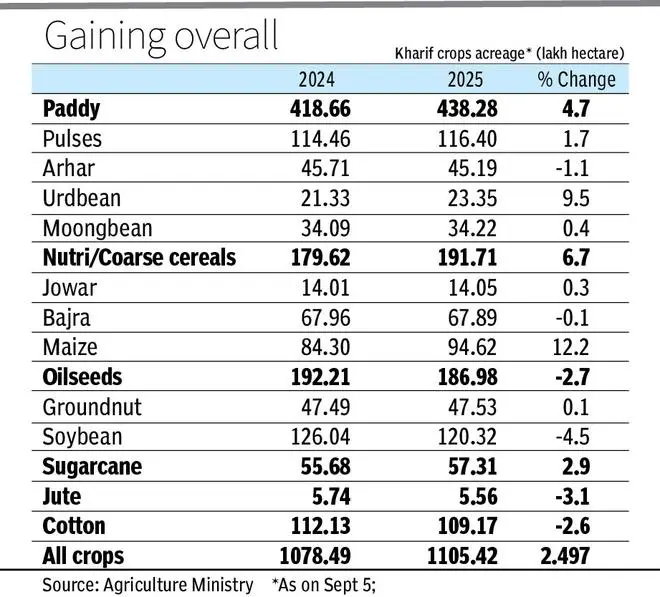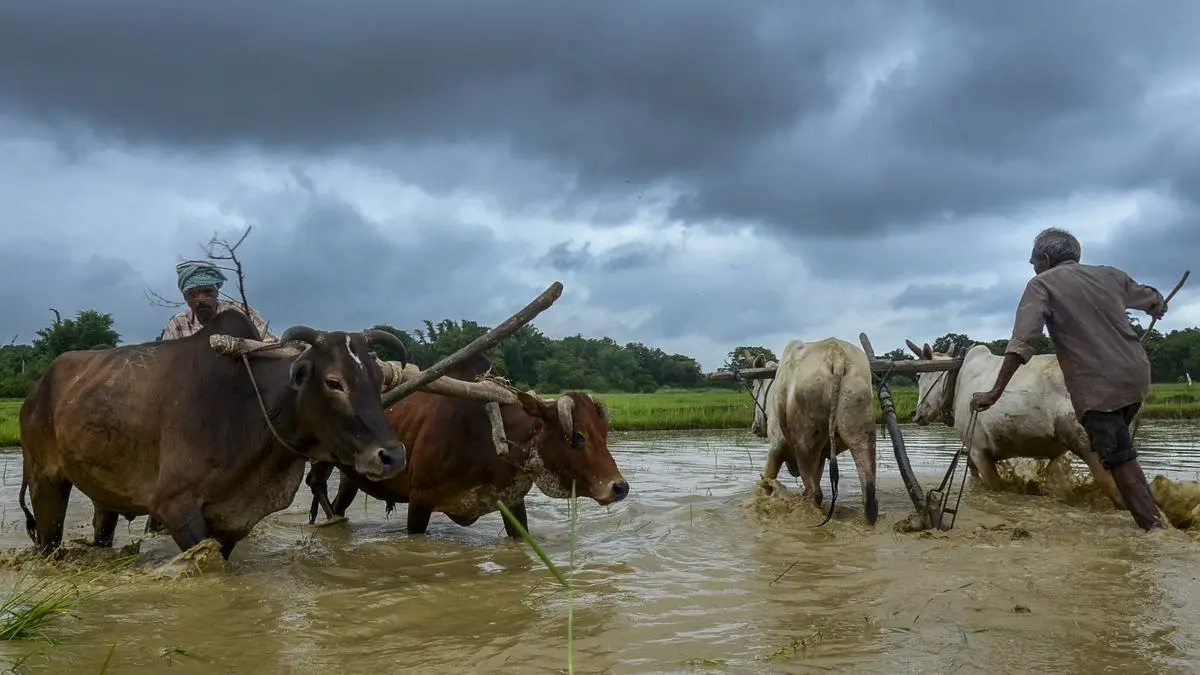
Sowing areas under all Kharif crops have crossed the normal area of about 1,097 lh, for the first time this season
| Photo Credit:
PTI
Crop damage reports have come from different States, including Punjab and Rajasthan, but it will take time to make an actual assessment once flood water recedes and heavy rainfall stops, a senior official said. The Centre is soon sending its inter-ministerial team to affected areas of Punjab as Prime Minister Narendra Modi is scheduled to visit the state on Tuesday, the official said.
There have been reports of crop damage from several states such as Jammu and Kashmir, Himachal Pradesh, Punjab, Haryana, Rajasthan, Maharashtra, Gujarat and Telangana, official sources said. However, compared to Punjab, the extent of damage in other states is not much of a concern from the point of view of national production, the sources said.
“Crop damage is a reality. Still, production of major crops is expected to be normal, except marginal drop in some where the areas are significantly less and those crops were also affected due to heavy rains and floods,” the official said.
Lead down to 2.5%
With less than 13 lakh hectare (lh) area sown by farmers under different crops during the past week (as against over 19 lh in the previous week), the lead over year-ago period in current season further narrows to nearly 2.5 per cent as of September 5 from over 5 per cent until August 1.
Sowing areas under all Kharif crops have crossed the normal area of about 1,097 lh, for the first time this season. According to the latest data released by the Agriculture Ministry, overall kharif sowing reached 1105.42 lh as of September 5 from 1078.49 lh a year ago. The area under paddy, tur, maize, groundnut and sugarcane has crossed their respective normal (last five years’ average) acreage.

The area coverage under the kharif season’s main cereal paddy has reached 438.28 lh from 418.66 lh a year ago, which is 4.7 per cent higher while that of pulses reached 116.40 lh from 114.46 lh year-ago.
Arhar acreage down
In the pulses category, urad (black matpe) acreage up 9.5 per cent at 23.35 lh from 21.33 lh and moong (green gram) acreage up by 0.4 per cent at 34.22 lh from 34.09 lh. Arhar (pigeon peas) area trailed by 1.1 per cent at 45.19 lh from 45.71 lh year-ago.
The coverage of nutri/coarse cereals has reached at 191.71 lh from 179.62 lh, up by 6.7 per cent in which maize area is up by 12.2 per cent at 94.62 lh from 84.30 lh, Shree Anna (millets) areas are almost flat — Jowar (sorghum) at 14.05 lh against 14.01 lh year-ago and bajra (millet) at 67.89 lh against 67.96 lh and ragi up by 10.2 per cent at 9.84 lh from 8.93 lh.
Oilseeds area continues to trail and now reached 186.98 lh from 192.21 lh, down by 2.7 per cent. Soyabean acreage has slipped 4.2 per cent to 120.32 lh from 126.04 lh and that of groundnut acreage a tad higher at 47.53 lh from 47.49 lh. Sunflower area is also lower by 10 per cent at 0.64 lh from 0.71 lh year-ago.
Cotton acreage too dropped 2.6 per cent to 109.17 lh from 112.13 lh. Both Sugarcane and Jute planting has been completed and provisional data show that the cane area reached at 57.31 lh against 55.68 lh, whereas jute coverage is 5.56 against 5.74 lh.
Published on September 8, 2025
